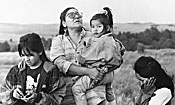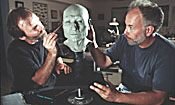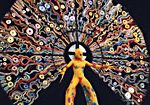Price: $295.00
This often humorous, often poignant, and always profound video explores the differences in the ways that men and women experience the love relationship. It features men and women from a variety of cultural and social backgrounds who provide eloquent — and sometimes rueful — testimony on how gender differences affect love, courtship, “couplehood,” marriage, emotions, understanding, and sensitivity.
Product Description
One of the most important journeys in human life is the quest for a satisfying, enduring love relationship. This search is nearly universal, and a lasting love is the goal of most people in most societies. This search has an unparalleled power and immerses us in many of the strongest emotions we will experience in our entire lives.
This often humorous, often poignant, and always profound video explores the differences in the ways that men and women experience the love relationship. It goes beyond mere analysis and examines ways to make a relationship work better for both men and women. Some potential problems reflect important gender differences and needs, while others involve gendered expectations about the love relationship itself.
The video features men and women from a variety of cultural and social backgrounds who provide eloquent — and sometimes rueful — testimony on how gender differences affect love, courtship, “couplehood,” marriage, emotions, understanding, and sensitivity. In powerful and revealing interviews, they discuss what women believe is the most important thing a man needs to know about women, and what men believe is the most important thing a woman needs to know about men.
The video begins in infancy, with the ways society constructs boys and girls with gendered ideas about who we are, what is important about us, and what we need. It goes on to illustrate how the differential treatment of boys and girls ensures that they will bring to a love relationship different gifts, needs, and goals.
Our search for love relationships is also influenced by deep-seated ideas about how women and men “should” behave in courtship, love, and marriage. The video examines this socialization process by looking at “etiquette” guidelines for women and men. One hilarious scene follows a young woman as she tries to use the advice she has read on how to attract a man — but with dubious results.
The video also explores how women and men detect “attraction signals.” These are subtle, fleeting, critical nonverbal cues that can lead to a relationship — but only if they are detected and accurately interpreted. Verbal communication is also examined, especially the presumed goals of conversation. The video demonstrates how gender differences can lead one partner to regard a conversation as enjoyable, while the other person sees the very same exchange as confusing, enigmatic, or even irritating.
In powerful sequences, children give their views on love and relationships and adults describe lost loves and their devastating impact on their lives. One extraordinary young woman confesses that she has created — after an important relationship has failed — a series of secret “tests” to determine quickly if any man she meets is even capable of deeply caring for her needs.
The video also introduces non-traditional couples, considers evolving meanings of “marriage,” “family,” and “parent,” and reveals the anguish and problems caused by the denial to non-traditional couples of the rights and privileges routinely given to traditional couples.
There is a consistency, power, and persuasiveness in these revelations, and all viewers of “Gender and Relationships” will emerge with an enhanced understanding of what women and men bring to a love relationship, and — just as important — what they need to get from it.
This work is destined to become a classic and a “must-see” for students in many disciplines, including psychology, sociology, women’s and gender studies, communication, nonverbal behavior, anthropology, and many others. It was produced by Prof. Dane Archer, of UC Santa Cruz, and is imbued with the same flair, instructional effectiveness, and vitality that have made all of his best-selling videos on nonverbal behavior, cultural differences, and communication favorites of students and faculty alike.
































































































































